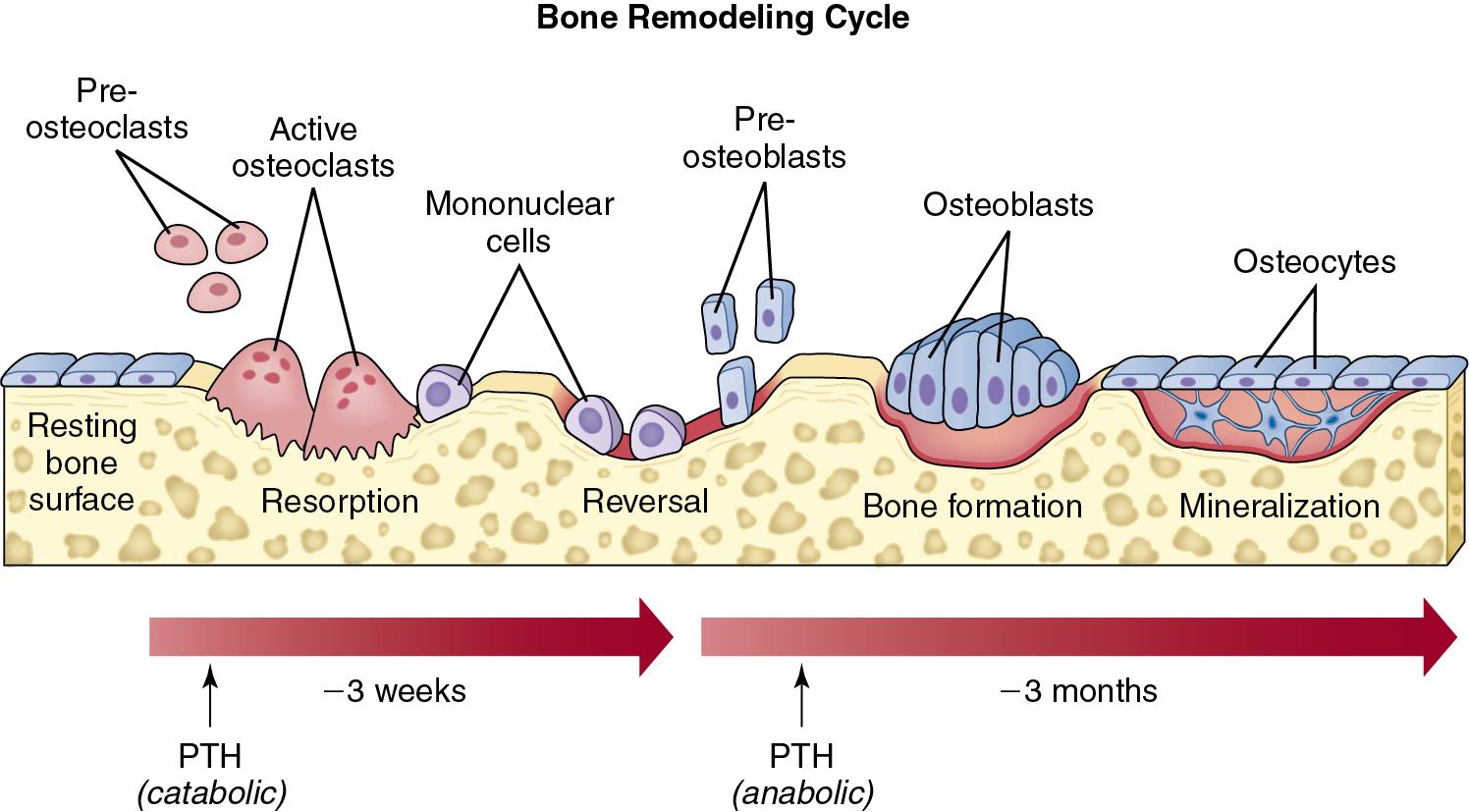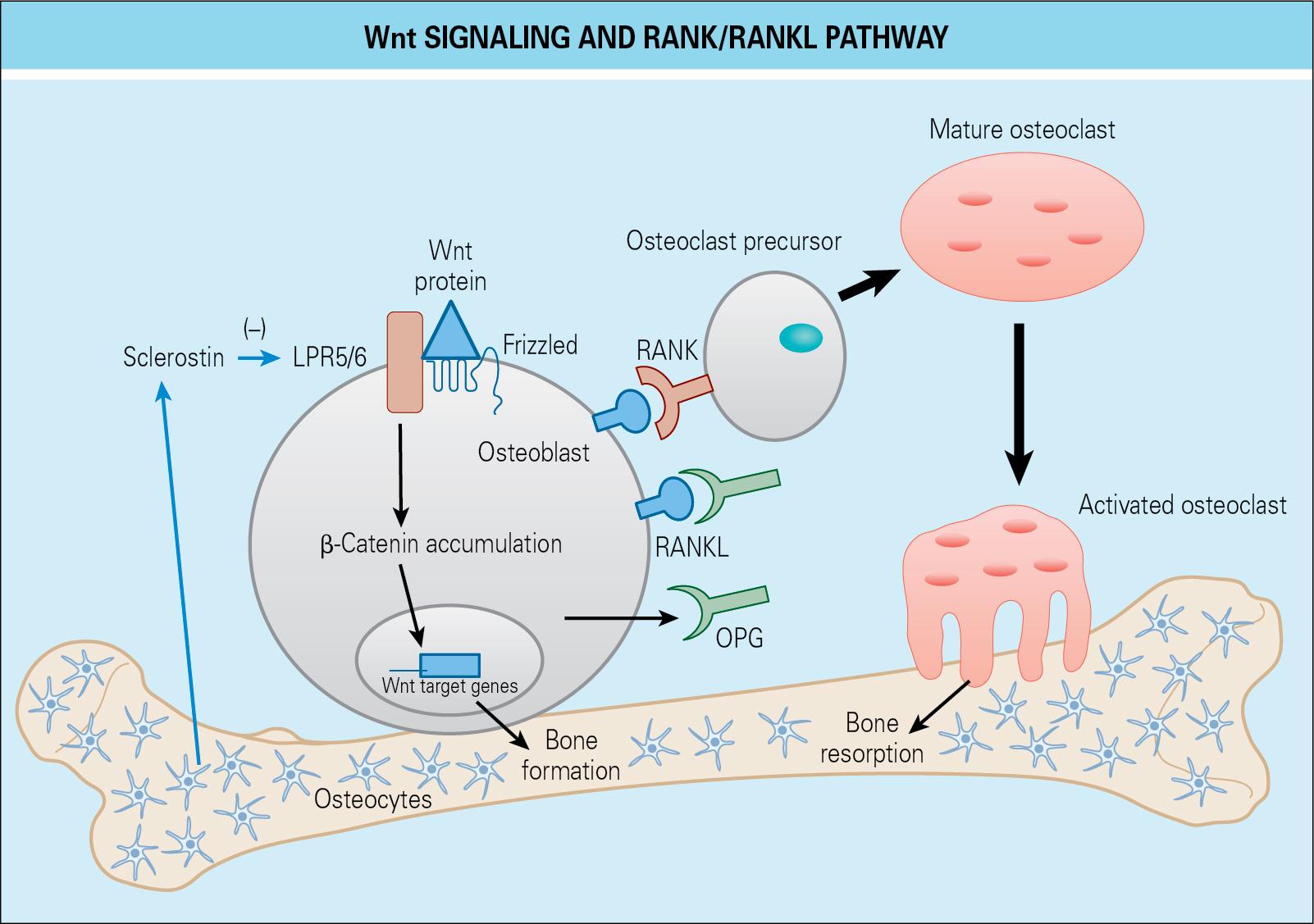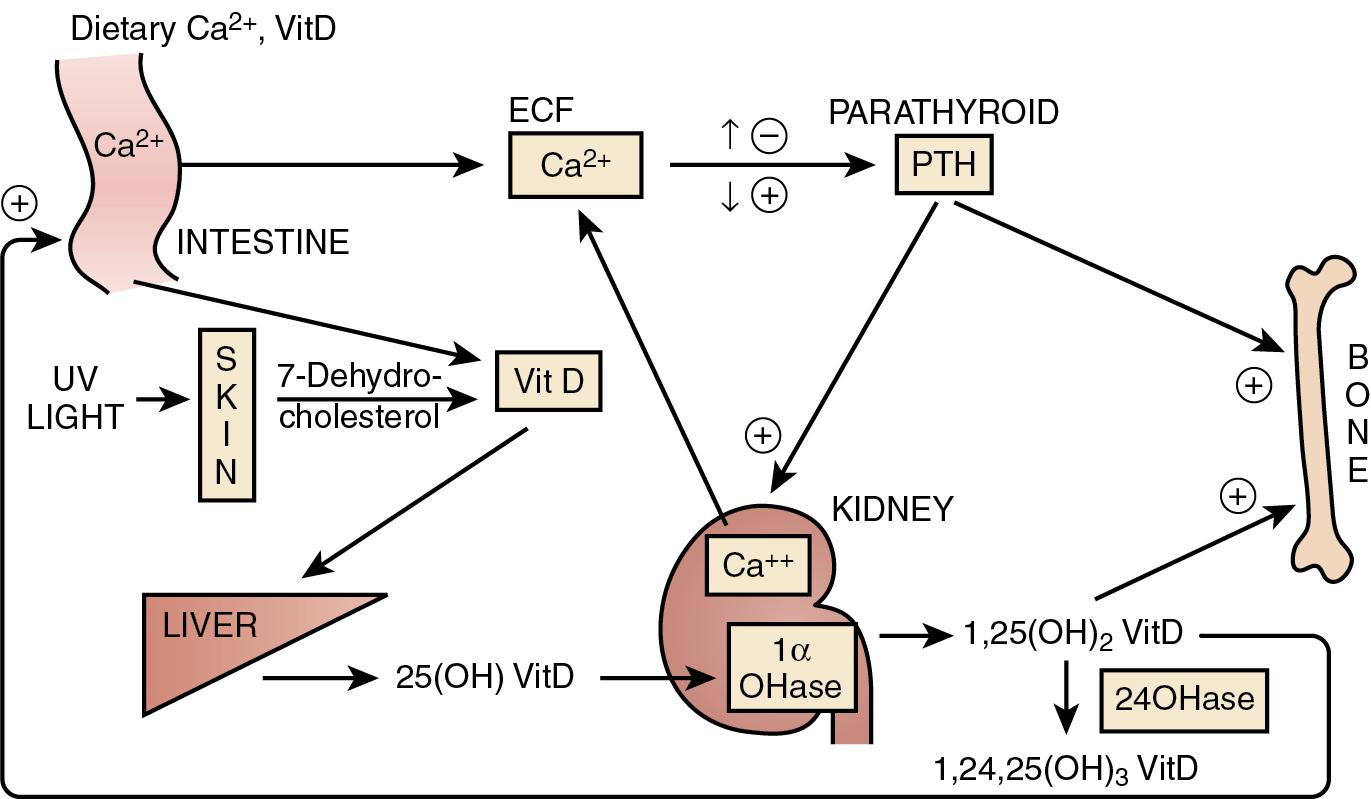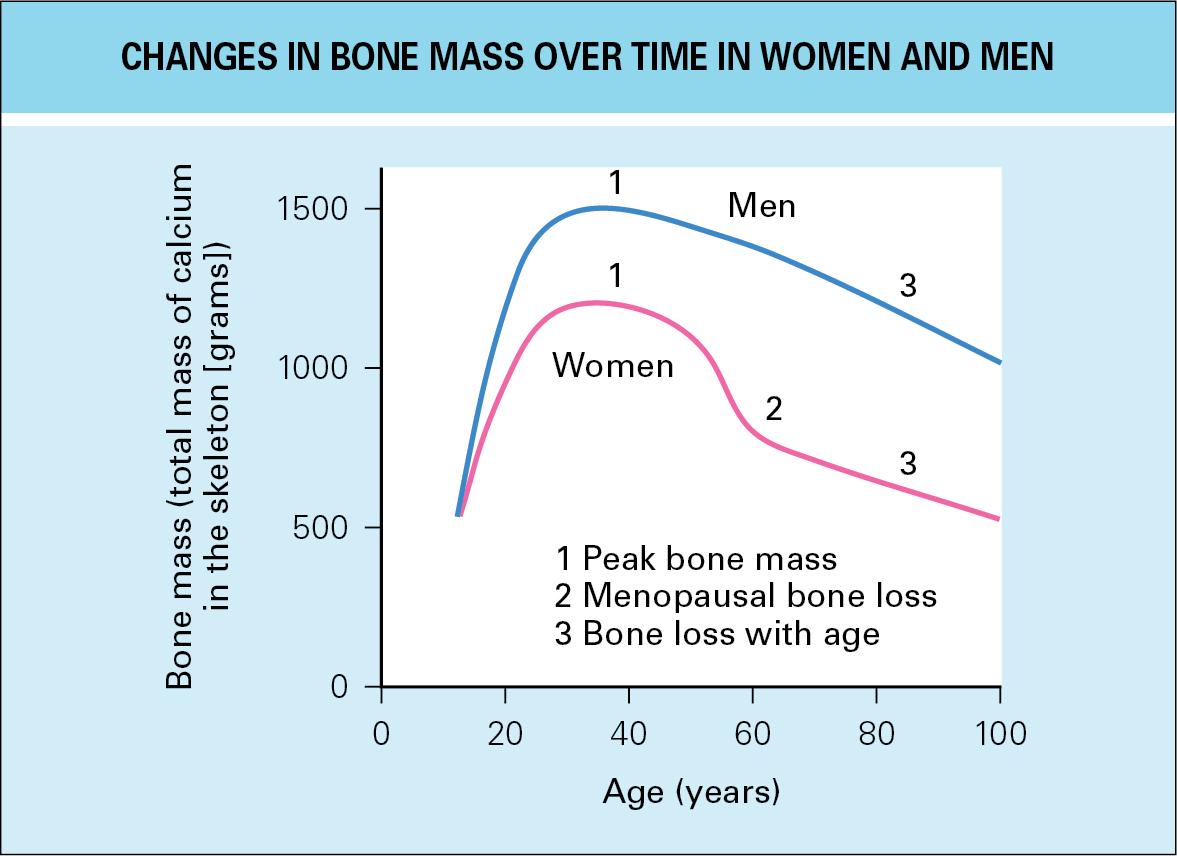Physical Address
304 North Cardinal St.
Dorchester Center, MA 02124
Major bone functions include:
Mineral storage (i.e., calcium, phosphorus, magnesium)
Protection of internal organs from injury (i.e., brain, spinal cord, viscera)
Provide support to the body by serving as a framework for tissue attachment
Facilitate movement including locomotion by serving as an attachment for muscles
Hematopoiesis
The skeleton is composed of two types of bone tissue:
Cortical (compact) bone (80%)
Cancellous (trabecular) bone (20%)
Cortical bone provides skeletal strength and rigidity, especially under torsional and bending loads. Cancellous bone serves two major functions: resistance to compressive loads and facilitation of bone remodeling by providing a high surface area for metabolic activity. Both types of bone adapt throughout life to mechanical effects according to Wolff’s law, which states that bone will adapt to the loads under which it is placed (i.e., bone under load hypertrophies, while absence of load is associated with bone mass loss).
Bone tissue is composed of cells and matrix.
The cellular components of bone include:
Osteoblasts
Osteocytes
Osteoclasts
The matrix is composed of:
Organic components (40%)
Inorganic components (60%)
The organic components include type 1 collagen, proteoglycans, noncollagenous matrix proteins (e.g., osteocalcin, osteonectin), and growth factors. The inorganic component, predominantly calcium hydroxyapatite [Ca 10 (PO 4 ) 6 (OH) 2 ], provides mineralization of the matrix and is responsible for the hardness and rigidity of bone tissue. Uncalcified bone matrix, known as osteoid, is pathologic and is a hallmark of rickets and osteomalacia.
Osteoclasts develop from the myeloid hematopoietic stem cells of monocyte/macrophage lineage. These multinucleated giant cells are located in cavities along bone surfaces called Howship lacunae and are responsible for bone resorption.
Osteoblasts develop from the pluripotential mesenchymal stem cells of bone marrow and perform various functions, including synthesis of osteoid, bone mineralization, and regulation of calcium and phosphate flux.
Osteocytes arise from osteoblasts that have undergone terminal cell division and become surrounded by mineralized bone matrix. They possess extensive cell processes that communicate with other osteocytes and osteoblasts.
Osteoprogenitor cells are derived from bone marrow mesenchymal stem cells and have capacity under certain conditions to differentiate into osteoblasts.
Bone remodeling is the coupled process of bone resorption and subsequent formation through which skeletal repair, adaption to change in biomechanical stress, and release of calcium into the systemic circulation occurs. The basic multicellular unit of bone remodeling involves osteoclasts, osteoblasts, bone lining cells, and osteocytes. Osteocytes function as mechanoreceptors, which detect skeletal stress and initiate bone remodeling at a specific site. Osteoclasts attach to the bone surfaces and secrete acid and enzymes that dissolve away underlying bone. Osteoblasts migrate into these resorption pits (cancellous bone) and tunnels (cortical bone) and secrete osteoid, which is subsequently mineralized. Normal skeletal homeostasis requires a balance between bone formation by osteoblasts and resorption by osteoclasts, which is achieved by coupling . Coupling of bone formation and resorption is regulated by direct interaction between osteoblasts and osteoclasts, by local interactions between the immune system and bone cells, and by neuroendocrine mechanisms involving a range of mediators including sex hormones, growth hormones, osteocalcin, and leptin ( Fig. 64.1 ).

Pathways that influence the balance between bone formation and resorption include the Wnt pathway (bone formation) and the r eceptor a ctivator of n uclear factor k appa (κ) beta (β) (RANK) and RANK ligand (RANKL) pathway.
Interactions between RANK, RANKL, and osteoprotegerin (OPG) play an important role in the pathophysiology of osteoporosis. Osteoclast precursor cells are derived from bone marrow hematopoietic progenitor cells and have surface receptors for RANK. Under the influence of parathyroid hormone (PTH), osteoblasts express RANK ligand, which binds to the RANK receptor on preosteoclasts and causes signaling changes promoting osteoclastogenesis and bone resorption. Osteoblasts also secrete OPG, a soluble decoy receptor that inhibits bone resorption by binding to RANKL which prevents it from binding to RANK ( Fig. 64.2 ).

Bone mineral balance is tightly regulated by the interaction of vitamin D metabolites (25-hydroxyvitamin D and 1,25-dihydroxyvitamin D), PTH, and calcitonin. Calcium homeostasis depends on the interaction of these factors with various organ systems, including the liver, kidney, and gastrointestinal tract, as well as the thyroid and parathyroid glands.
PTH acts directly on bone and the kidney, and indirectly at intestinal sites. The direct actions of PTH include activation of osteoblasts and stimulation of reabsorption of calcium and loss of phosphate in the distal renal tubule. PTH acts indirectly at intestinal sites through the vitamin D pathway by increasing the conversion of inactive 25-hydroxyvitamin D (25-OH vitamin D) into the active form, 1,25-dihydroxyvitamin D in the kidney. The active form of vitamin D binds to intestinal vitamin D receptors to promote calcium and phosphorous absorption.
Vitamin D is available in two natural forms: cholecalciferol (D3) and ergocalciferol (D2). Humans acquire vitamin D by two routes: endogenous synthesis in the skin during sunlight exposure (D3) and dietary intake (D2 and D3). Vitamin D from either source is converted in the liver by 25-hydroxylase to 25-OH vitamin D and then by 1-alpha-hydroxylase in the kidney to the active form, 1,25-dihydroxy vitamin D ( Fig. 64.3 ).

Peak bone mass (PBM) is defined as the highest level of bone mass achieved as a result of normal growth. Bone mineral density (BMD) increases rapidly during adolescence until PBM is reached between 16 and 25 years of age. After age 30, men normally lose bone at a rate of 0.3% per year. After age 30, women normally lose bone at a rate of 0.5% per year until menopause, at which time the rate of bone loss accelerates to 3%–5% per year over a 5- to 7-year period before returning to the previous rate of bone loss. The greater the PBM, the better the chance of avoiding osteoporosis later in life. This explains why increasing age is an important risk factor for osteoporosis ( Fig. 64.4 ).

Metabolic bone diseases are a diverse group of disorders characterized by abnormalities in calcium metabolism and/or bone cell physiology. Osteoporosis, Paget disease, osteomalacia, and renal osteodystrophy are some common metabolic bone diseases that affect the spinal column. In developed countries, the most common metabolic bone disease is osteoporosis.
Osteoporosis is the most prevalent metabolic bone disease. It affects 10% of adults in the United States over age 50 years. Osteoporosis leads to decreased bone mass and bone quality, resulting in reduced bone strength. A reduction in the amount of normally mineralized bone per unit volume occurs as a result of an imbalance in the cellular activity responsible for maintaining the bony microarchitecture. Such structural alteration increases bone fragility and hence, the risk of fracture. Osteoporosis is diagnosed by the presence of a fragility fracture or by measurement of BMD in the absence of fracture ( Fig. 64.5 ).

Fragility fractures occur spontaneously or following minimal trauma such as falling from standing height, and most commonly involve the thoracic and lumbar vertebral bodies, proximal femur, and distal radius. Fragility fractures may also involve the proximal humerus, pelvis, ribs, and odontoid process. Approximately 2 million fractures are attributed to osteoporosis annually in the United States. The lifetime risk of an osteoporotic fracture is estimated as 40% in women and 13% in men. Not all fragility fractures are associated with clinical symptoms. For example, up to two-thirds of osteoporotic vertebral fractures are asymptomatic. History of fragility fracture is among the strongest risk factors for future fracture.
Become a Clinical Tree membership for Full access and enjoy Unlimited articles
If you are a member. Log in here